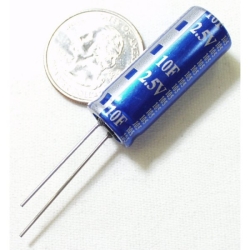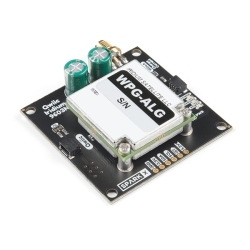Super Capacitor - 10F/2.5V
COM-00746
Super Capacitor - 10F/2.5V
SKU: COM-00746
$4.95
In stock
SKU
COM-00746
Product Overview
Yes you read that correctly - 10Farad capacitor. This small cap can be charged up and then slowly dissipated running an entire system for hours. Combine two in series for 5F/5V. Do not over voltage or reverse polarize these capacitors.
Hookup Accessories
Features & Specs
- 13mm x 33.5mm
Documentation
Customer Reviews

Super Capacitor - 10F/2.5V
$4.95
COM-00746
Stock and Customer Discounts
$4.95 retail price.
Available Discounts
- $4.70 | 25+ units
- $4.46 | 100+ units



